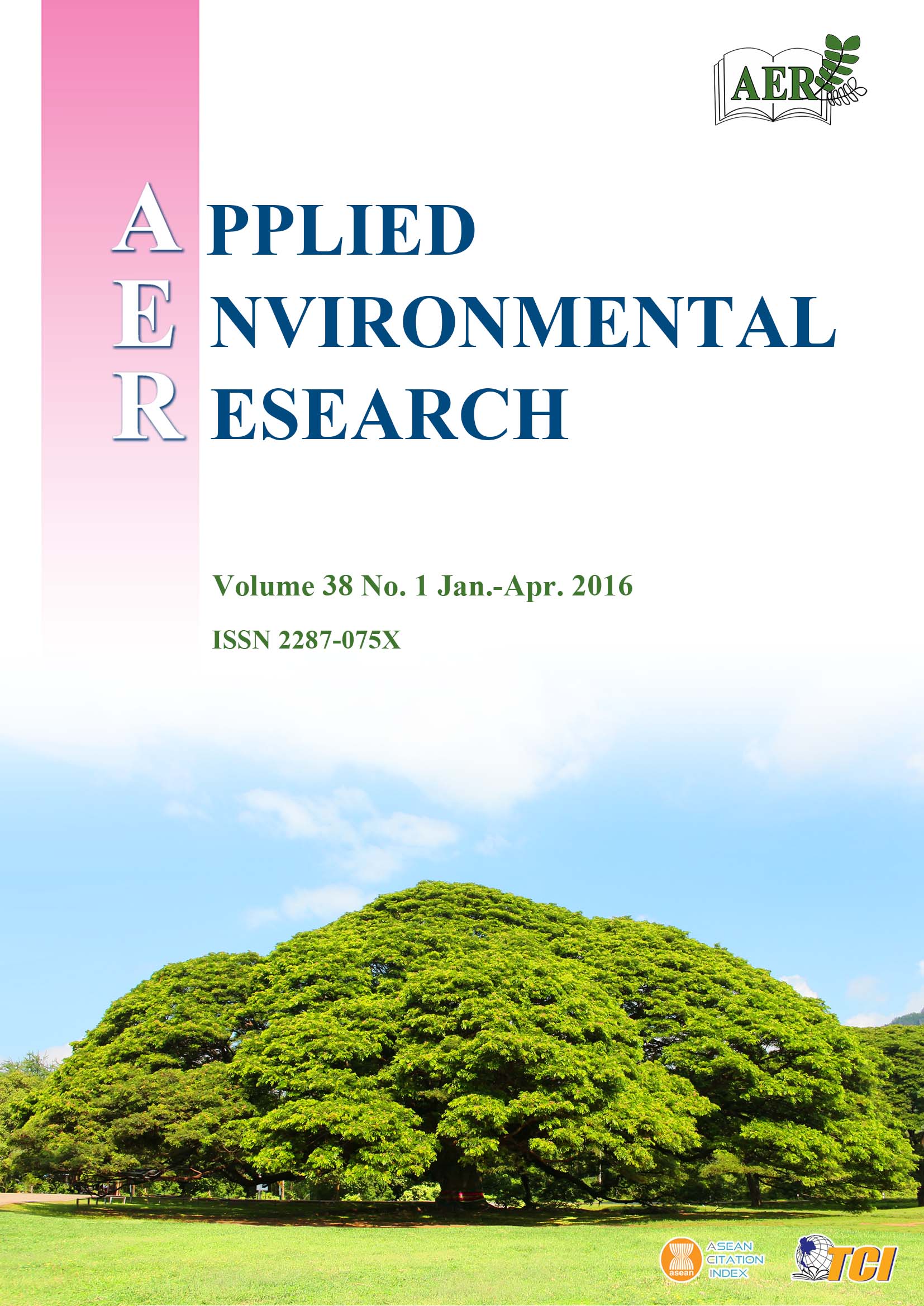Species-specific Responses of Water Use by Urban Trees to Artificial Soil Drought: Results from a Small-scale Study
Main Article Content
Abstract
Studying tree water relations in response to soil drought improves our understanding of hydrological processes that are central to most ecosystem modelling. Urban greening is an approach to ameliorate rising carbon dioxide emissions whose effects are intensified in cities. Thus, an investigation of water relations with respect to drought of urban trees is of interest for effective water management in urban greening. This study examined responses of sap flux density, water use and stomatal conductance of potted saplings of three common street trees in Bangkok: Pterocarpus indicus (Pi), Swietenia macrophylla (Sm) and Lagerstroemia speciosa (Ls); under one-week non-irrigated treatment. Results showed that Pi and Sm maintained their water use rate while Ls experienced reduction in water use under soil drying condition. Further analyses on stomatal conductance and leaf area suggested that leaf drop, which may be induced by soil drought, resulted in increases of stomatal conductance. The counteracting effect of increased stomatal conductance and decreased leaf area seems to explain the unaffected water use in Pi and Sm under drought conditions. However, a smaller compensatory effect was observed in Ls, resulting in significant reduction of water use in the non-irrigated saplings. Thus, these results indicate that Pi and Sm may be preferred for street tree planting since they would be less affected by drought stress than Ls. Nevertheless, further investigations, including detailed measurements of tree hydraulic variables and longer experimental duration, are advised to confirm these findings for extrapolation to a larger scale.
Article Details

This work is licensed under a Creative Commons Attribution-NonCommercial 4.0 International License.
Published articles are under the copyright of the Applied Environmental Research effective when the article is accepted for publication thus granting Applied Environmental Research all rights for the work so that both parties may be protected from the consequences of unauthorized use. Partially or totally publication of an article elsewhere is possible only after the consent from the editors.

